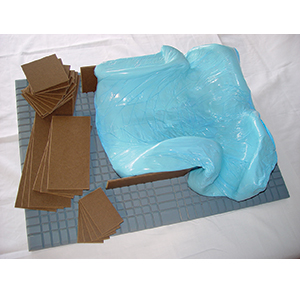The ACMMII has changed several times since its introduction to the field in 1985. Today’s version is colored a more hospital-friendly blue, and includes a carry handle built into the board. Over 23 different sized assorted dividers are provided to make any form from head and neck, breast, torso, prostate, or extremity forms. Patients can be large, small, treated prone or supine, or even laying on their side. Need the patient propped up 15 degrees? Place one of our 15-degree wedges under the bag of foam and your customized form will fit the wedge for each treatment. Timo head holders and other devices can be placed under the foam to incorporate its use with the system.
Forms made on the ACMMII offer numerous advantages over vacuum bags. If you’ve used them, you’ll discover they don’t work effectively. They pull away from your patient rather than pushing up against the patient. Most vac bags are so shallow they resemble surf boards, and they don’t have a flat base. Commonly, they develop leaks, making them useless. A loved member of the family doesn’t belong in a form that several other cancer patients may have used. Our custom molded forms have a flat base. Our forms keep their shape, even if poked or punctured. All of our forms can be customized with a serrated knife, if you need to cut a port. Our forms are customized and tightly hold your patient. Vac bags are loose guides at best. They are positioning forms, not repositioning forms.
Each kit includes a bottle of papi, marked bottle #1, and a bottle of polyol, marked bottle #2. The smaller AC250 contains enough foam to immobilize the torsos of smaller children, or an adult head, head & neck, or upper extremity. The AC325 is our standard size foam. It has been developed to create most adult anatomical molds, including lower extremities, pelvic forms, breast forms, mantle forms, head & shoulder, etc. The ACMMII (Alpha Cradle Mold Maker board) gives you the flexibility to have the patient lay flat, rolled to one side, one or both arms up or down, or any other set-up position needed.
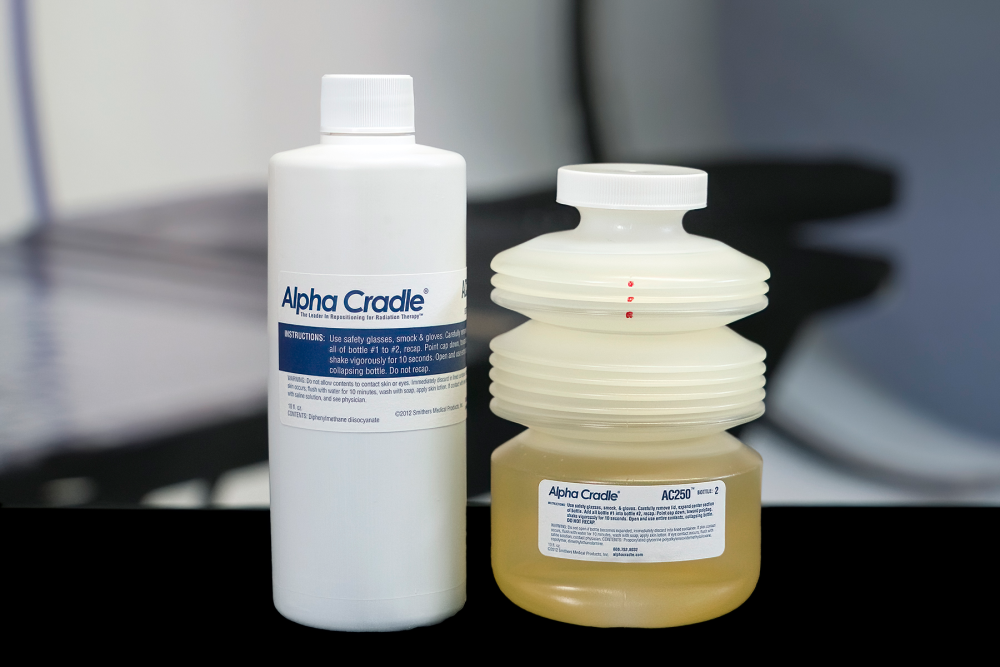
SAFETY FIRST: Wear protective gloves, smock and eye protection. Have patients remove jewelry before making forms. Always follow directions!
Using the ACMII Board
The ACMMII is a 24”x 34” slotted board that comes with 23 assorted dividers to create customized body devices. Use it to make any type of anatomical device on any size patient, young or old, in the prone or supine position.Comfort your patient. Tell your patient what to expect. They must lay still for 15 minutes while their personal customized form rises around them. It will feel comfortably warm as the foam rises and hardens in the position they will need to hold while being treated.
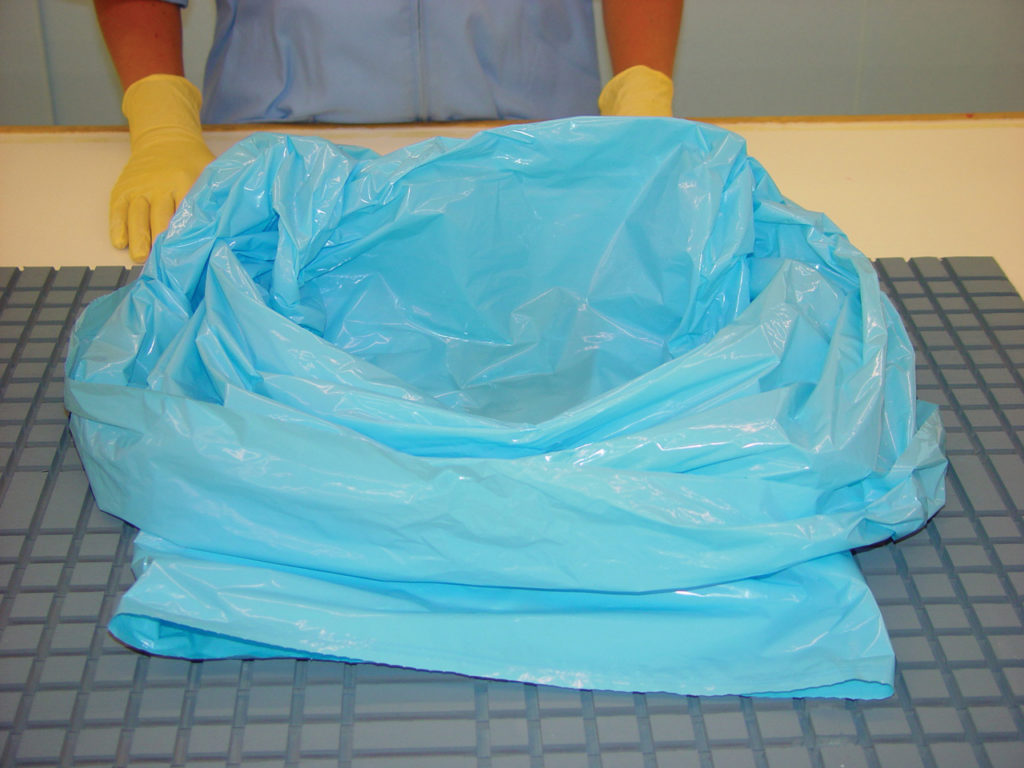 1. Open and spread out the blue polyform bag.
1. Open and spread out the blue polyform bag.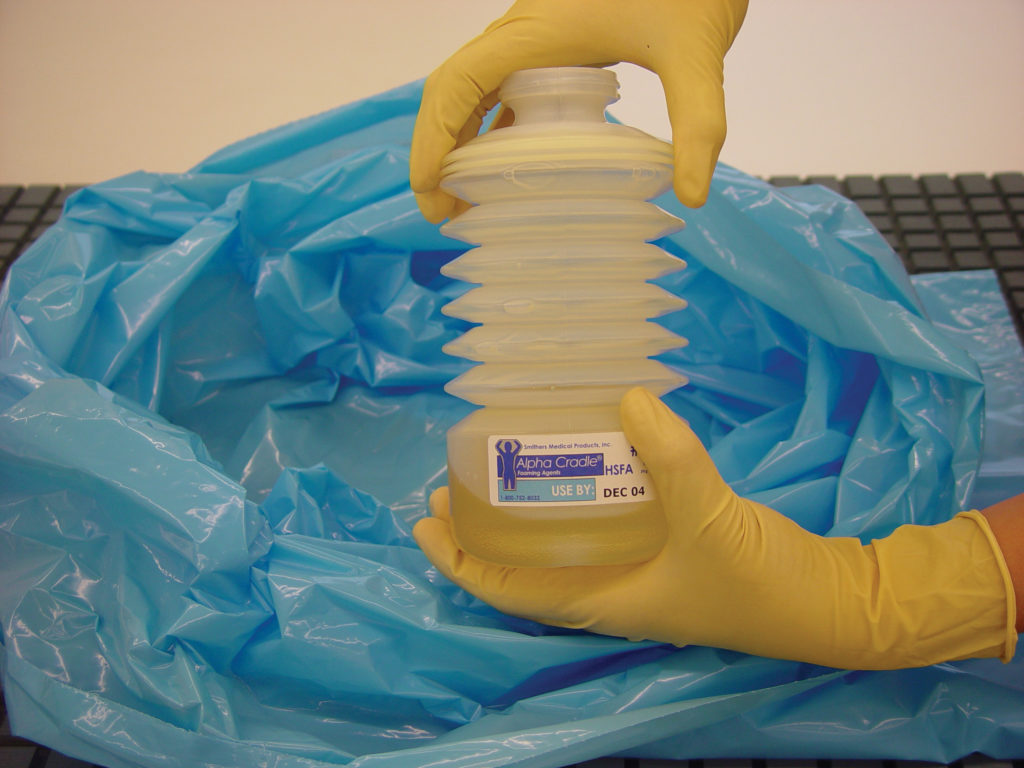 2. Remove the cap and expand bottle #2, leaving the top 3 ribs collapsed. Carefully pour the entire contents of bottle #1 into bottle #2. Discard bottle #1 into a leakproof container.
2. Remove the cap and expand bottle #2, leaving the top 3 ribs collapsed. Carefully pour the entire contents of bottle #1 into bottle #2. Discard bottle #1 into a leakproof container.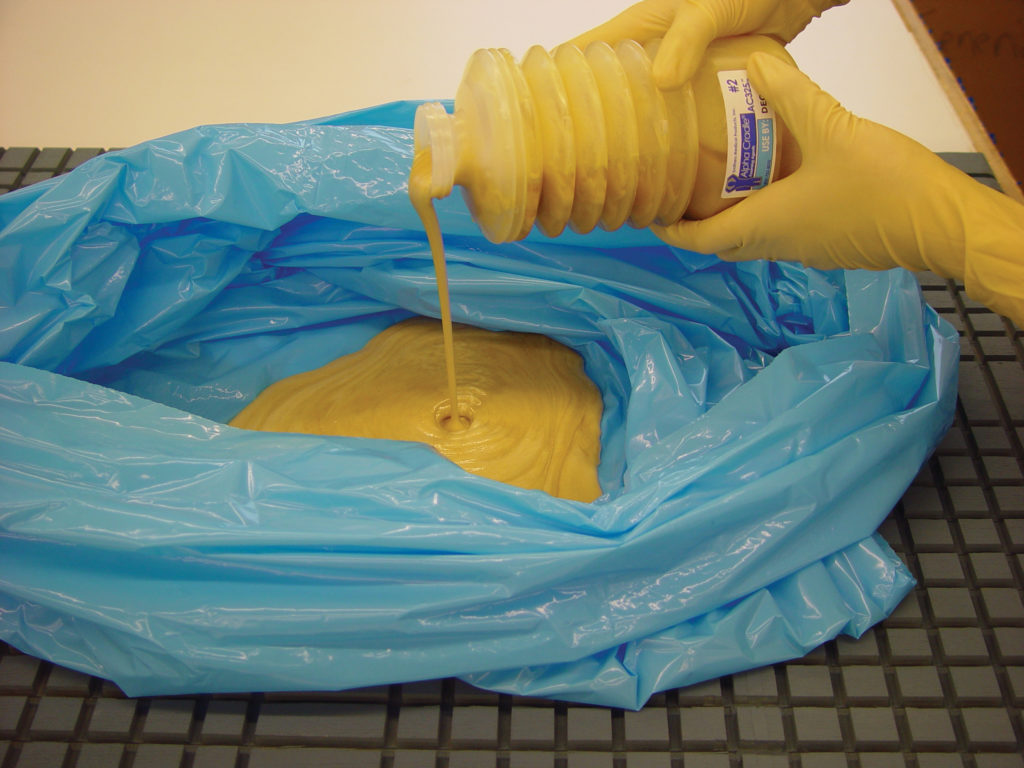 3. Recap bottle and point it down inside the bag toward the base, away from everyone. Shake vigorously for ten timed seconds. Pour entire contents into the bag, collapsing the bottle. The color should be solid. If it is a marbled color, you did NOT shake the bottle hard enough.
3. Recap bottle and point it down inside the bag toward the base, away from everyone. Shake vigorously for ten timed seconds. Pour entire contents into the bag, collapsing the bottle. The color should be solid. If it is a marbled color, you did NOT shake the bottle hard enough.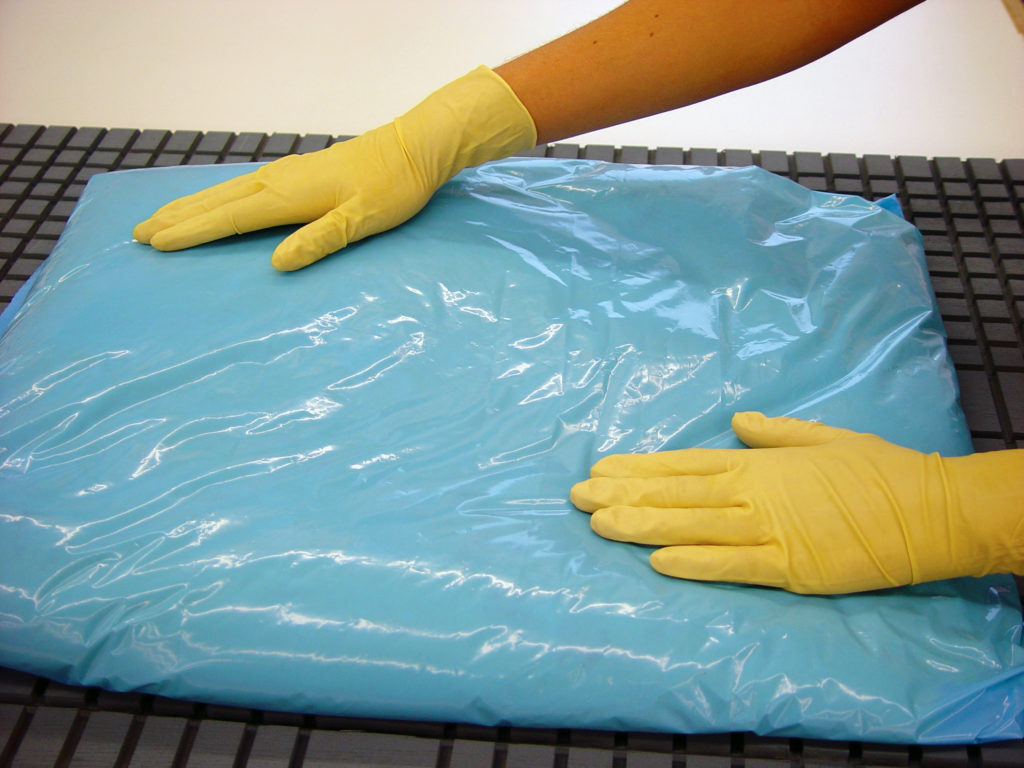 4. Spread the rising foam evenly throughout the bag. Carefully push as much air as you can out of the bag, without pushing the foam out. Fold the open end of the bag underneath. Wait until the foam rises a full inch before placing patient on the bag.
4. Spread the rising foam evenly throughout the bag. Carefully push as much air as you can out of the bag, without pushing the foam out. Fold the open end of the bag underneath. Wait until the foam rises a full inch before placing patient on the bag.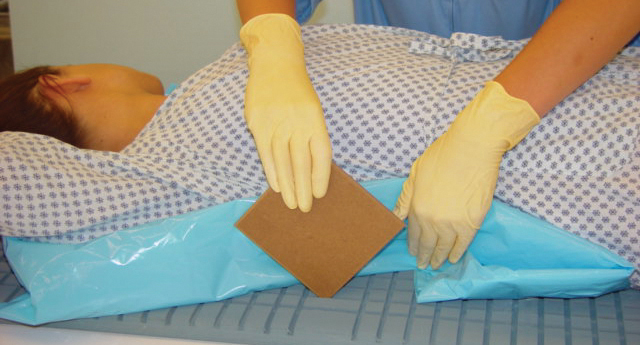 5. Use dividers to place the rising foam firmly against the patient, unrolling the bag as necessary. Keep the foam firmly against the patient for 15 minutes, until the form cools and completely hardens. Remove patient and dividers from mold.
5. Use dividers to place the rising foam firmly against the patient, unrolling the bag as necessary. Keep the foam firmly against the patient for 15 minutes, until the form cools and completely hardens. Remove patient and dividers from mold.
Helpful Hints
IMPORTANT!!!
You must use the dividers to keep the bag of foam high and tight on the patient to make deep impressions that will guide your patient back into place. The patient must remain still for 15 minutes. Do not move the foam once it has started hardening; you will damage the form and it will not remain rigid.
STRENGTHENING FORMS: Larger patients can flatten the base of your forms, making them weak and subject to cracking or breaking. To strengthen the forms considerably, use a piece of 1/2” or 3/4” extruded foam just smaller than the width of your patient. Place it into the bag, pour the foam on top of it, then spread it evenly around the added piece. This added piece of extruded polystyrene will strengthen the base dramatically while diverting more foam to the sides of the patient, where it’s needed most.
CREATING TIGHT, SECURE FORMS: When making the customized mold, you must make deep impressions and keep them tight against the patient during the foaming process. Unroll the bag if you need to, and work foam into the newly added bag space to make the form higher on the patient. You must use the Alpha Cradle Mold Maker II and dividers to accomplish this. You can also use tape across the patient to hold the dividers secure while the form is being made.
CURING EACH MOLD: While the form hardens, you can feel it cool back to room temperature within 15 minutes (depending upon temperature and atmospheric conditions in the room). Do not allow the patient to get up until the mold is cool (room temperature) to the touch. If the area underneath the patient is still warm, allow it to harden properly before use. This will result in a secure, comfortable tool to quickly reposition your patient each time they come in for treatment.
SPILLS: Prevent spills by following directions! If foam spills onto a hardened surface, immediately wipe off. Residue of the hardened foam can be cleaned with KY Jelly. This tip came from Brent Woodall (RT)(T). If foam spills onto any type of carpet or fabric, DO NOT TOUCH UNTIL IT HAS COMPLETELY HARDENED; doing so will only push the foam into the fabric. After it has cured, try to peel off the foam. KY Jelly may also help remove from hair.
